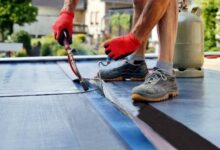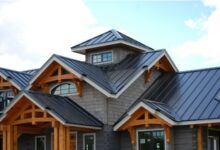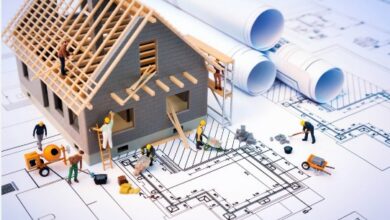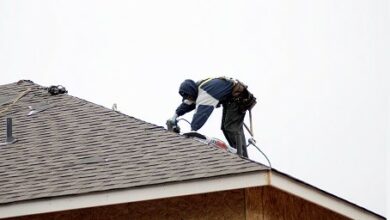Maintaining Drywall: Effective Strategies to Prevent Future Damage
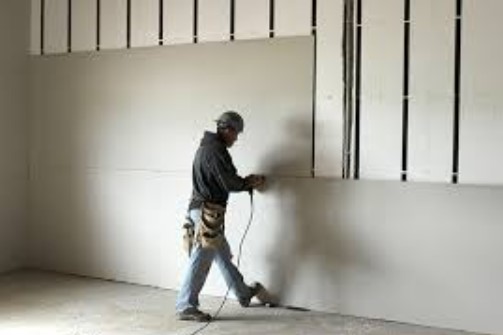
Drywall is a fundamental component of modern construction, providing smooth, durable interior walls and ceilings. However, its susceptibility to damage from various sources necessitates proactive maintenance to ensure longevity and aesthetic appeal. We will explore practical tips and strategies from Hanks Handyman Services near Plano for maintaining drywall to prevent future damage and preserve the integrity and appearance of your interior spaces.
Inspecting and Repairing Cracks and Holes
Regular drywall inspection is crucial in identifying early signs of damage, such as cracks and holes. These vulnerabilities can result from settling, temperature fluctuations, or impact. Inspect walls and ceilings annually, paying attention to seams, corners, and high-traffic areas. Use a joint compound to fill small cracks and holes, ensuring a smooth surface before repainting. Consider employing mesh tape and multiple compound layers for more extensive damage for sturdy reinforcement. Prompt repair not only prevents further deterioration but also maintains the aesthetic appeal of your interior.
Managing Moisture to Prevent Mold
Moisture is one of the primary enemies of drywall, as it can lead to mold growth and structural instability. Preventing moisture buildup is essential in maintaining drywall integrity. To reduce humidity, ensure proper ventilation in bathrooms, kitchens, and laundry rooms. Use exhaust fans and dehumidifiers where necessary, especially in areas prone to condensation. Address any plumbing leaks promptly to prevent water seepage into walls and ceilings. Applying moisture-resistant primer and paint can provide an additional barrier against moisture infiltration, safeguarding your drywall from mold and mildew.
Read also: Understanding Mold Remediation: A Comprehensive Guide
Protecting Against Physical Damage
Physical damage to drywall can occur from everyday activities such as moving furniture, accidental impacts, or children playing. Taking preventive measures can significantly reduce the risk of such damage. Install corner guards in vulnerable areas such as doorways and corners to shield against impacts. Consider using furniture pads when moving heavy objects to minimize wall dents and scratches. Educate household members and visitors about the importance of gentle handling to preserve drywall’s structural integrity. By preventing physical damage, you maintain the smoothness and appearance of your walls over time.
Maintaining Proper Paint and Finish
The paint and finish on drywall enhance aesthetics and provide a protective layer against dirt, moisture, and wear. Regularly inspect painted surfaces for signs of peeling, cracking, or discoloration. Touch up areas showing wear and tear promptly to prevent further deterioration. Use high-quality paint and primer suitable for drywall to ensure durability and ease of maintenance. Consider applying a fresh coat of paint every few years to rejuvenate the appearance of your walls and maintain their protective barrier. Properly maintained paint and finish not only enhance your interior’s visual appeal but also prolong your drywall’s life.
Ensuring Proper Installation and Framing
The longevity of drywall heavily depends on its initial installation and framing. Improper installation can lead to sagging, cracking seams, and other structural issues over time. Hire experienced professionals who follow industry standards for drywall installation. Ensure proper framing with adequate support for corners, ceilings, and walls. Use appropriate fasteners and techniques to secure drywall sheets firmly, minimizing the risk of future shifting or cracking. Investing in proper installation and framing establishes a solid foundation for your drywall, ensuring its resilience and longevity in your home.
Choosing Appropriate Cleaning Methods
Proper cleaning methods are essential for maintaining the cleanliness and appearance of drywall without causing damage. Use a soft, dry cloth or a vacuum cleaner with a soft brush attachment to regularly remove dust and dirt from walls and ceilings. Avoid abrasive materials or harsh chemicals that can scratch or strip the paint and finish. For stubborn stains, gently dab with a mild detergent solution and rinse with clean water. Always test any cleaning solution in an inconspicuous area to ensure it does not cause discoloration or damage. By adopting gentle cleaning practices, you can preserve the smooth texture and color of your drywall surfaces over time.
Monitoring and Addressing Structural Settling
Structural settling over time can cause visible cracks and seams in drywall, particularly in older homes or buildings with foundation issues. Monitor the condition of your walls and ceilings regularly for signs of new cracks or widening of existing ones. Address structural settling issues promptly by consulting with a qualified contractor or structural engineer. They can assess the underlying cause of settling and recommend appropriate repairs or adjustments to prevent further damage to your drywall. Proactive monitoring and timely intervention can mitigate the effects of structural settling and help maintain the stability and appearance of your interior surfaces.
Educating Household Members on Maintenance
Educating household members about proper maintenance practices can significantly contribute to the longevity of your drywall. Encourage gentle handling of walls and ceilings, emphasizing the importance of avoiding impacts and unnecessary pressure on drywall surfaces. Teach family members to promptly report any signs of damage or moisture issues so that repairs can be addressed promptly. By fostering a culture of awareness and responsibility for drywall maintenance within your household, you promote a proactive approach to preserving the integrity and aesthetics of your interior spaces for years to come.
Effective drywall maintenance involves a combination of preventive measures and proactive management to preserve its structural integrity and visual appeal. By implementing strategies such as inspecting and repairing cracks, managing moisture levels, protecting against physical damage, maintaining proper paint and finish, ensuring correct installation and framing, choosing appropriate cleaning methods, monitoring structural settling, and educating household members on maintenance practices, you can extend the lifespan of your drywall significantly. These efforts enhance the durability of your interior walls and ceilings and contribute to a comfortable and aesthetically pleasing living environment. Taking these steps will enable you to enjoy the benefits of well-maintained drywall throughout the lifespan of your home.
<iframe src=”https://www.google.com/maps/embed?pb=!1m18!1m12!1m3!1d3343.7161850181787!2d-96.830494!3d33.0639381!2m3!1f0!2f0!3f0!3m2!1i1024!2i768!4f13.1!3m3!1m2!1s0x864c23e2a46a0ef5%3A0xf2400cf830cd74c1!2sHanks%20Handyman%20Services!5e0!3m2!1sen!2sro!4v1699555296191!5m2!1sen!2sro” width=”600″ height=”450″ style=”border:0;” allowfullscreen=”” loading=”lazy” referrerpolicy=”no-referrer-when-downgrade”></iframe>


